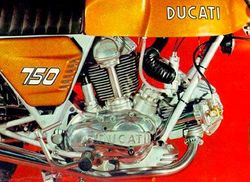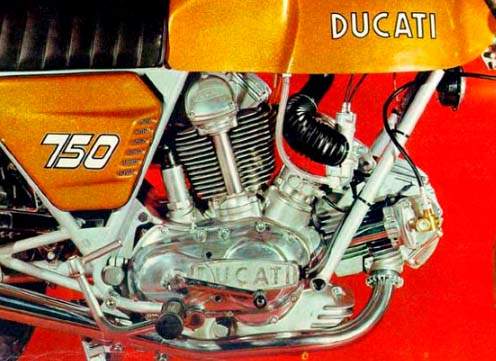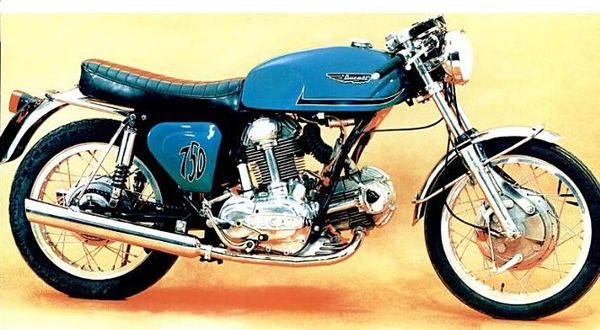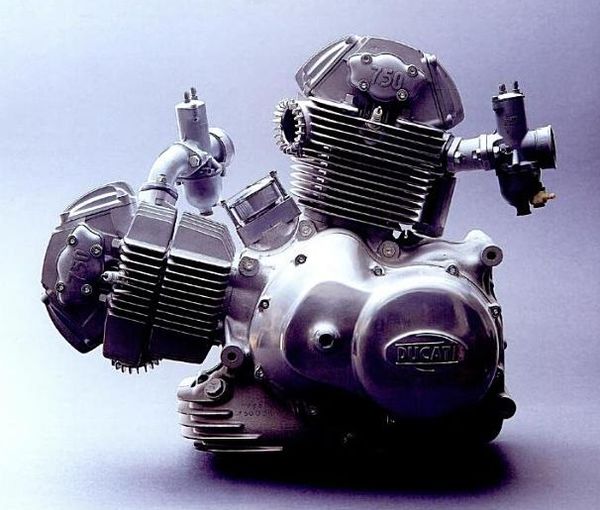Difference between revisions of "Ducati 750GT Prototype"
(initial) |
(No difference)
|
Revision as of 00:48, 15 June 2019
 | |
| Manufacturer | Ducati |
|---|---|
| Manuals | Service Manual |
| Tech Specs · Brochures · Reviews · Ads · Videos | |
Photos
Overview
Ducati 750GT Prototype
While origins are often cloaked in mystery, the precise EVOlution of the Ducati 750 GT is still discernible. The bevel-gear twin cylinders with a 90° V configuration, long known as an L-twin configuration, have a precise date of birth: March 20, 1970. British historian Ian Faloon relates that Fabio Taglioni drew the first sketch of what is perhaps his most famous and best loved engine, which over the years was to acquire the affectionate name of pompone (big pump), on the last day of winter 1970.
It was not long before the prototype was on the bench. It was a twin cylinder (really, a motorcycle engines ideal structure) arranged longitudinally and in a 90° V configuration. As far as balance went, this was also the best choice.
Taglionis method was direct, logical, and practical. He envisioned the bike as an essential sports machine. The distribution used the same single overhead camshaft driven by bevel-gear as the single-cylinders, while the capacity of 750 cc was obtained with a bore and stroke of 76 x 75 mm. The prototype was built rapidly. The result: a very personal sort of motorbike in which the engine played the central role, even stylistically.
The final bike was very similar to the prototype. The GT 750 appeared in June 1971. Its frame was more proportionate than that of the prototype, while the carburetors were 30 mm Amal Concentrics. It was also fitted with a front Lockheed disk brake. Its very name, Gran Turismo, immediately revealed that it was no sports bike, but the potential of this twin was immediately apparent to its enthusiasts.


